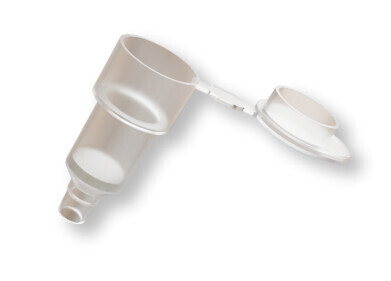Sample Prep
How to Choose the Best Eluent for Thin Layer Chromatography
Sep 28 2022
The eluent plays a vital role in thin layer chromatography, carrying the sample up the plate and allowing analyte components to separate based on their affinity to the stationary phase. In this post, we’ll dig a little deeper into eluent choice for thin layer chromatography, including why it’s important and how to choose the best eluent.
The role of the eluent in thin layer chromatography
As an affinity-based method, thin layer chromatography works by separating components based on how far they migrate up a thin material layer. The adsorbent layer consists of an inert plate coated in aluminium oxide or silica gel. Your sample is then placed onto one end of the plate and into the mobile phase.
That mobile phase is an organic solvent, which is also known as the eluent. That’s because it elutes the sample by carrying it up the thin layer by capillary action. Components will then separate from the mobile phase based on their affinity with the stationary phase, resulting in spots at different points along the plate. The retention factor can then be assessed for each component.
How does the eluent affect analyses?
It’s not just affinity with the stationary phase that matters. Components will also have an affinity with the eluent itself. As such, using an eluent with high polarity will create a high retention factor – which is the distanced travelled by a component divided by that of the eluent. The result is spots closer to the eluent front, where it stops moving up the plate. On the other hand, an eluent that’s low in polarity will give you spots close to the baseline because of a low retention factor.
To resolve issues of high or low polarity and retention factors, you can change the eluent ratio by mixing different amounts of a polar and non-polar solvent within the eluent. Alternatively, you can choose a different eluent altogether…
How to choose the best eluent
Eluent retention factor values can range from 0 to 1 – 0 indicating low polarity and 1 for high. For optimal results, you want retention factors to revolve around the midpoint of 0.5 – between 0.15 and 0.85 is ideal. A 1:1 mixture of hexane and ethyl acetate is a common starting point, from which adjustments can be made to increase or decrease the polarity.
Thin layer chromatography isn’t the only method where solvent and eluent selection are important. In hydrophilic interaction chromatography, there’s a need to match the sample solvent with the highly organic mobile phase. That challenge is discussed in the article, ‘Elimination of the Sample Solvent Effect when Analysing Water Solutions of Basic Peptides by HILIC’.
Digital Edition
Chromatography Today - Buyers' Guide 2022
October 2023
In This Edition Modern & Practical Applications - Accelerating ADC Development with Mass Spectrometry - Implementing High-Resolution Ion Mobility into Peptide Mapping Workflows Chromatogr...
View all digital editions
Events
ACS National Meeting - Fall 2024
Aug 18 2024 Denver, CO, USA
Sep 04 2024 Chiba, Tokyo, Japan
Sep 04 2024 University of Warwick, Coventry, UK
Sep 10 2024 Rockville, MD, USA
Plastics Recycling World Expo Europe
Sep 11 2024 Brussels, Belgium













